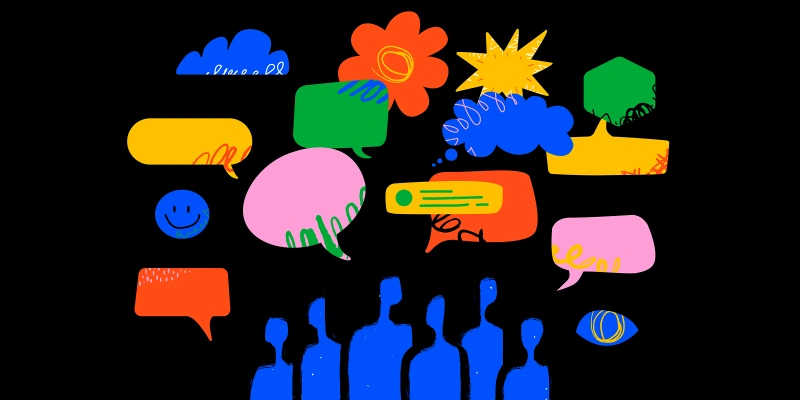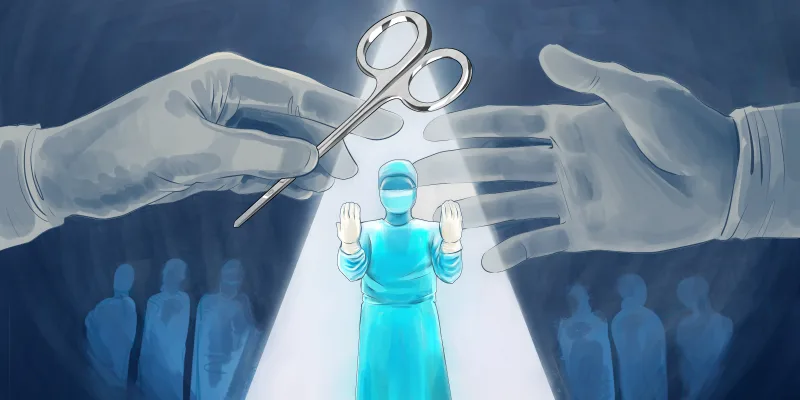The always affable Dr. Lewis First, MD and Dr. Alex Kemper, MD brought back their popular talk on the “Published Studies That Could Change the Way You Practice,” and they certainly knew how to keep the audience’s thinking caps on. The educational value of the lecture was amped up by First-class comic relief, but it certainly delivered interesting, actionable content.
Doximity is providing a video summary interview (above) as well as a transcript and listing of the studies discussed during the session below for reference:
Lewis First, MD: This is Dr. Lewis First with Dr. Alex Kemper here on Doximity and at the National Conference and Exhibition. Talk about another one that you thought really was an ‘a-ha moment’ for pediatricians at our seminar.
Alex Kemper, MD: You know this was a very simple straightforward study that I think has a lot of practical import which is when you interpret urinalyses you really need to pay attention to the white blood count. You really have to look at the urine concentration because your threshold before you call something as being a urinary tract infection really depends upon what the urine concentration is and so that’s something that as a pediatrician I oftentimes didn’t think about but now I will.
Lewis First, MD: And you shared you took a peek so to speak at how to get urine from a baby without having to do a catheterization that was somewhat the audience was taken by the technique you shared which has appeared in our journal.
Alex Kemper, MD: Well, ‘urine’ luck I’d be happy to talk about it. So, the technique involves holding the baby up under the baby’s armpits and supporting the baby this way and if it’s a girl having another person come and flex the legs up, okay? And then another hand, probably having to come from another person can massage the front of the baby and then massage the back of the baby and sort of alternate this every 30 seconds for up to five minutes.
Lewis First, MD: We went on and we talked about a number of things at this seminar for example we talked about tonsillectomies and tonsillotomies, when you take only a little piece of tonsil and studied some of the safety issues and the effectiveness of just taking a little piece of tonsil over time. The literature seemed to support that first year things look good but after a year the data started to fall out and it’s not clear that in the long run doing those surgeries early are going to be more effective than some watchful waiting.
Alex Kemper, MD: Speaking of surgery, I was really impressed with the studies around non-operative treatment for appendicitis and the question is, what would you recommend for one of your patients?
Lewis First, MD: Well, I think I would basically make sure my patients understand that after a year about anywhere from 15 to 18% may need to be operated on. That there are extra costs of returns to the emergency department to a primary care office, potentially. More testing, more radiation.
It was interesting we presented a number of studies where we can’t prove causality or likewise again there was no association with improvement in cognitive outcomes in your study. I presented one on ADHD in the Mediterranean diet and in that study it showed that this was from Barcelona, Spain the kids who did not go on the Mediterranean diet seem to have many more of the signs and symptoms consistent with attention deficit hyperactivity disorder.
Alex Kemper, MD: What will be really interesting moving into the future is that there are randomized trials to different diets to affect ADHD so if you take a child who’s not on the Mediterranean diet and put them on it will it reduce symptoms of ADHD?
Lewis First, MD: We finished talking about energy with the subject of burnout and I talked about two papers one amongst residents which was very concerning that about a third of residents in a study of multiple programs are burnt out which is a little scary and then we talked about neonatal intensive care units and the staff that are in those units and again about 30% of the staff in units are burnt out. We offer to the attendees today and to our Doximity viewers some of the teasers that you’ll go and look at these studies think about how they’ll relate to your practice and hopefully in the long run we will improve the health and well-being of the kids we serve and how can you be burnt out when you think about what we do each and every day.
Saying thanks for watching and check out those articles!
Psychological Manifestations of Celiac Disease
- Study question: What is the psychological impact of Celiac Disease Autoimmunity (CDA)?
_ Smith LB et al. Pediatrics 2017;139(3):e20162848 found there to be a possible association at 3 years but no association at 4.5 years.
Celiac Disease and Anorexia Nervosa: A Nationwide Study
- Study question: Are girls with Celiac Disease (CD) at increased risk of Anorexia Nervosa (AN)before or after the diagnosis of CD?
_ Marild K et al. Pediatrics 2017;139(5):e20164367 found there to be increased risk of AN before CD diagnosis (OR: 2.13)
Phototherapy and Type 1 Diabetes
- Study question: Is there association between neonatal phototherapy and type 1 diabetes?
_ Newman T. et al. Pediatrics 2016, 138 (5): e20160687 found no association when adjusted for confounders.
Phototherapy and Autism
- Study question: Is there any association between neonatal phototherapy and autism?
_ Wu Y et al. Pediatrics 2016, 138 (4): e20161813 found no association after adjusting for confounders.
A Clinical Prediction Rule for Rebound Hyperbilirubinemia Following Inpatient Phototherapy
- Study Question: What are easily obtained factors that can identify risk of rebound hyperbilirubinemia?
_ Chang PW et al. Pediatrics 2017; 139(3):e20162896 found that a probability score = 15 (if GA < 38 weeks)—_7 x (age in days at phototherapy initiation)—_4 x (difference in phototherapy level and TSB) + 50.
Reasons for Trying e-cigarettes
- Low cost, ability to use where conventional cigs are banned, ability to quit conventional cigarettes. (Bold KW et al. Pediatrics 201, 138 (3): e20160895)
Teen risk behaviors and use of e-cigs and cigs
- more likely to engage in injury, violence, substance abuse, sexually active with multiple partners (Demissie Z et al. Pediatrics 2017, 139(2): e20162921)
E-cigs and “Dripping”
- Vaporize the e-liquid at high temperature by dropping a few drops directly on atomizer’s coil _ formaldehyde exposure
New Strategy for Clean-Catch Urine in Infants
- Study question: Can a noninvasive bladder stimulation technique be used to collect urine in infants? (Chaudhari P. et al. Pediatrics 2016;138(5):e20162370
- Technique: offer feeding for 20 min, clean infant, hold infant under axillae, males: les dangling, females: hips flexed; alternate: tap suprapubic area 100X/min for 30 sec then lumbar massage 30 sec for up to 5 min; catch the urine
Tonsillectomy vs Watchful Waiting
- Systematic review to compare tonsillectomy vs. watchful waiting in children with recurrent throat infections. (Morad AM et al. Pediatrics 2017, 139(2): e20163490)
Tonsillotomy vs. Tonsillectomy for Obstructive Sleep Apnea
- Study question: is adenotonsillotomy noninferior to adenotonsillectomy 1 year post-op?
- Results: both groups showed improvement, no significant differences
Mediterranean Diet and ADHD
- Study question: would low adherence to a Mediterranean Diet be associated with an increase in ADHD in children and teens?
- Results: ADHD associated with lower adherence to Mediterranean diet (PR 7.07, 95% CI 2.65–18.84). _ Rios-Hernandez et al. Pediatrics. 2016, 139 (2): e20162027.
- High consumption of sugar, candy, soft drinks and low consumption of fatty fish associated with higher prevalence of ADHD.
Announcements Versus Conversations to Improve HPV Vaccination Coverage: A Randomized Trial
- Study question: compared to usual care, does training health care providers to announce the need for HPV vaccine or engage in conversations about HPV vaccination lead to improvements in vaccination rate? (Brewer NT et al. Pediatrics 2017;139(1):e20161764)
- Results: announcement had vaccination rate 5.4% higher
Resident Burnout
- Study questions: what is the prevalence and is burnout associated with patient-care attitudes and behaviors? (Baer TW et al. Pediatrics. 2017;139(3):e20162163)
- 53% response rate / 39% found to have burnout
- residents with burnout had greater odds of having suboptimal patient care attitudes and behaviors
Changes you may wish to make in your practice (per Dr. First and Dr. Kemper)
- Consider celiac disease autoimmunity in children who present with behavioral issues before CDA is diagnosed. There is also a bidirectional relationship between celiac and anorexia nervosa.
- Continue to reassure families that phototherapy benefits outweigh risks and are not associated with diabetes or autism.
- Transcutaneous bilimeters can reduce blood draws.
- E-cigarettes’ risks far outweigh the benefits
- Try stimulation technique before catheterizing infants.
- Consider urine concentration when interpreting results of urinalyses.
- The safe sleep guidelines have been evidence-based to reduce the risk of sudden unexpected infant death although ongoing studies may result in a need to relook at the room-sharing duration.
- Many babies still below BW at 14 days of age, so don’t panic but monitor.
- Be aware of safety and efficacy of non-operative treatment of appendicitis but also of the long term of risk of future operation.
- Breastfeeding may not improve child development but there are benefits.
- There is still benefit to tonsillectomy/tonsillotomy in sleep disordered breathing.
- Be aware of increased risk of cancer after solid organ transplant.
- Consider dietary questions when working up ADHD.
- Children born with CMV infection (asymtptomatic) are at risk for late-onset hearing loss through age 5.
- Review safety issues that warrant concern: carriers, access to opiates, riding ATVs.
- Announce HPV vaccine rather than asking.
- Overcome burnout and promote resiliency by finding joy in caring for children and staying current with Pediatrics journal.






